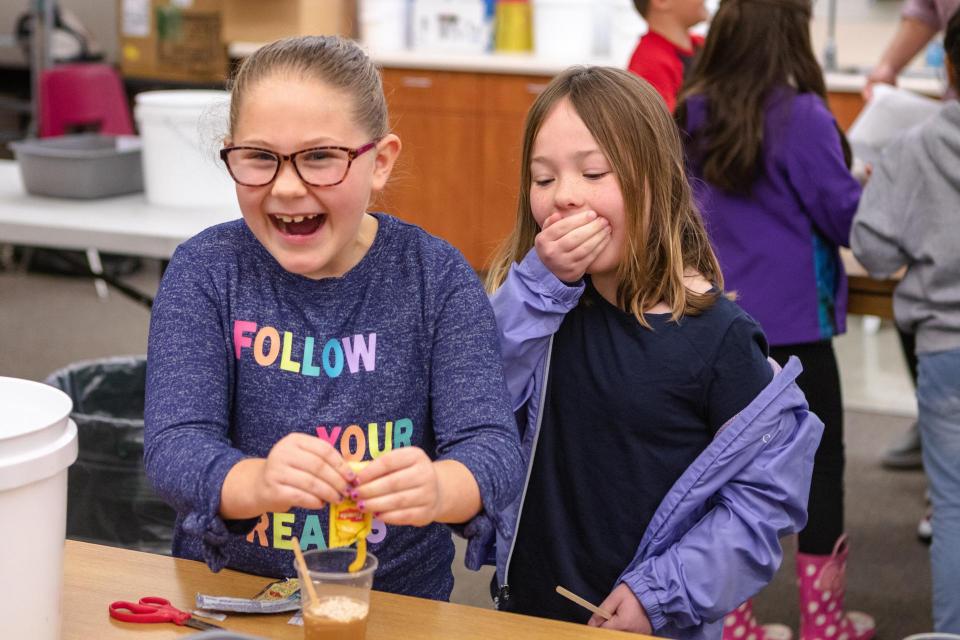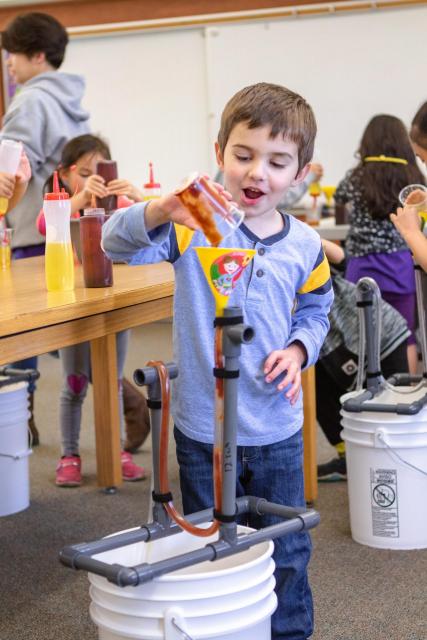Phenomenon, Question, and Enduring Understanding
Our Content
Phenomenon:
Our Dirty Water Goes Down The Drain.
Using phenomena (observable events that occur all around us) to drive teaching and learning is one of the major shifts in the Next Generation Science Standards. By centering science education on phenomena, the focus of learning shifts from learning about a topic to figuring out how or why something happens.
An effective phenomenon does not always have to be flashy or unexpected. From an educational perspective, the most powerful phenomena are the ones that are most relevant to students’ lives. Such phenomena highlight how science ideas help us explain the world around us or design solutions to problems that matter to students, their communities, and society.
Central San’s Education Programs have one singular phenomenon that guides all of our work: Our dirty water goes down the drain. This is, in our humble opinion, the single greatest science or engineering phenomenon that has ever existed. It is something that every student, at every age, sees and experiences every single day of their lives. This is true regardless of where they live, what language they speak at home, or the education level of their caretakers.
From this singular (and deceptively simple) phenomenon, we can unpack the rich physics, chemistry, biology, environmental science, and engineering involved in our daily work. The beauty of this phenomenon is that there is no grade level for which it is inappropriate; it applies equally to everyone.
Guiding Question:
What Happens To Our Dirty Water AFTER It Goes Down The Drain?
While a good phenomenon gives us the what to explore, the guiding question gives us the why. A good guiding question has certain defining characteristics, as described by Jay McTighe and Grant Wiggins in their seminal book, Essential Questions. A good guiding question:
- Is open-ended. Typically it will not have a single, final, and correct answer.
- Is thought-provoking and intellectually engaging, often sparking discussion and debate.
- Calls for higher-order thinking, such as analysis, inference, evaluation, prediction. It cannot be answered effectively by recall alone.
- Points towards important, transferable Ideas within (and sometimes across) disciplines.
- Raises additional questions and sparks further inquiry.
- Requires support and justification, not just an answer.
- Recurs over time—that is, the question can and should be revisited again and again.
Questions that meet all or most of these criteria qualify as essential. By tackling such questions, learners are engaged in uncovering the depth and richness of a topic that might otherwise be obscured by simply covering it.
Central San’s Education Programs have one singular guiding question to unpack all the complexity of our work, our system, the role we play in people’s lives, and the role we play in protecting public health and the environment: What happens to our dirty water AFTER it goes down the drain? Which part of our system we focus on, for how long, and the specific science and engineering we unpack depend on the age group we are working with, the grade-appropriate standards, and the amount of time we are given with our chosen audience. But regardless of context, this singular guiding question remains the same.
Enduring Understanding:
The Stuff We Put In Our Water (And Down Our Drains) DOES NOT Disappear.
The principles of any sensible planning framework implore us to identify what students should know, or be able to do, when they are done. They also implore us to identify these understandings at the outset of instruction.
In every classroom, regardless of age, and regardless of science content, we have one singular enduring understanding we want each and every student to walk away with: The stuff we put in our water (and down our drains) DOES NOT disappear. The extent to which we unpack that understanding or the acceptable evidence of mastery depend again on the age group we are working with, the grade-appropriate standards, and the amount of time we are given with our chosen audience.
However, everything we teach—from how the wastewater system in our homes work, to how Central San maintains our complex system of pipes underground, to how we treat the volumes of wastewater we receive each day, to the steps we take to ensure that our water is clean and safe to return to the environment—all have this central understanding at their core.
All of our systems and processes recognize this fundamental truth as part of their engineering designs. And all of our organizational and institutional outreach efforts seek, at their core, to have people consider this fundamental truth when taking action to flush (or not flush) something down the drain.



